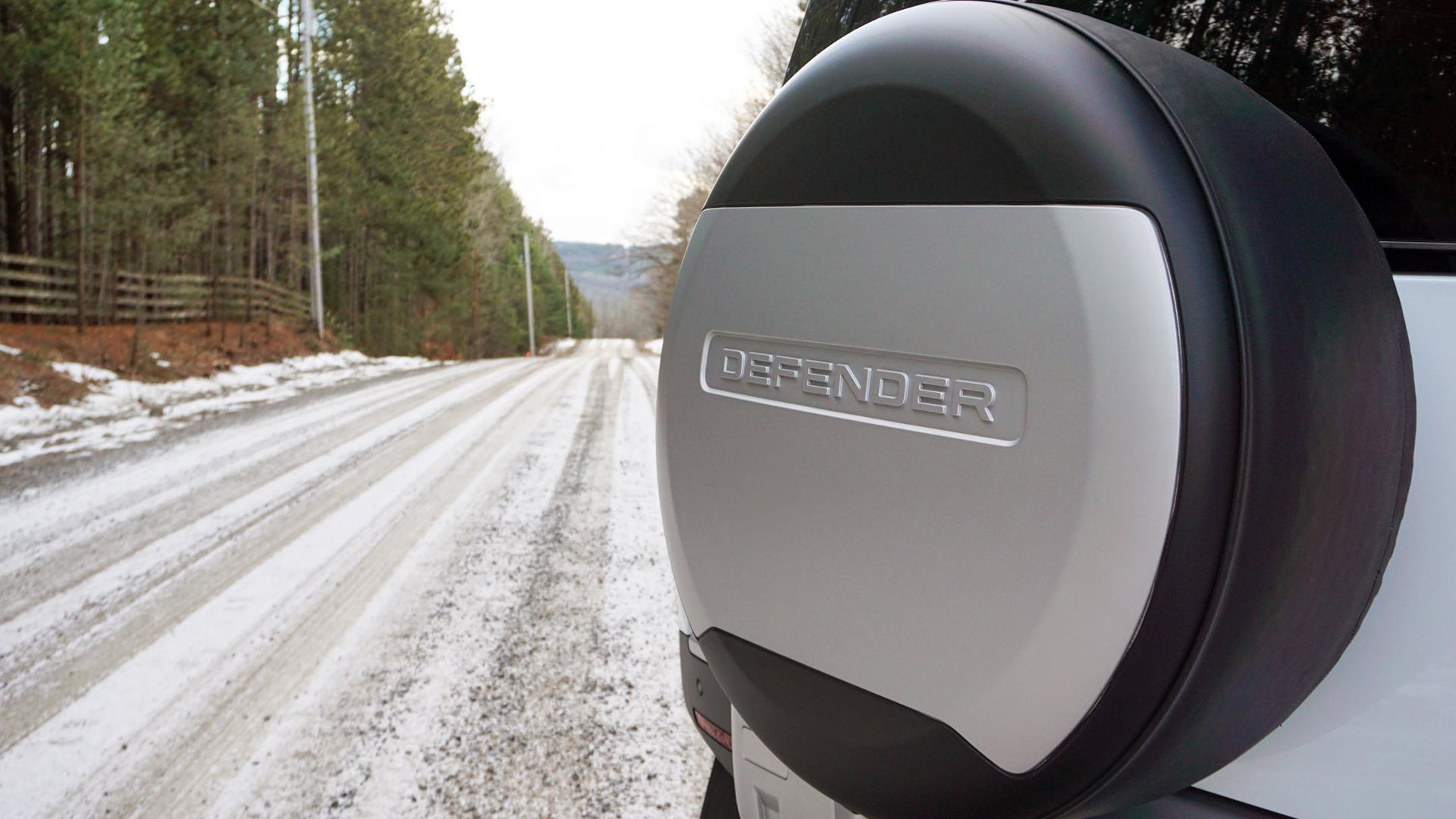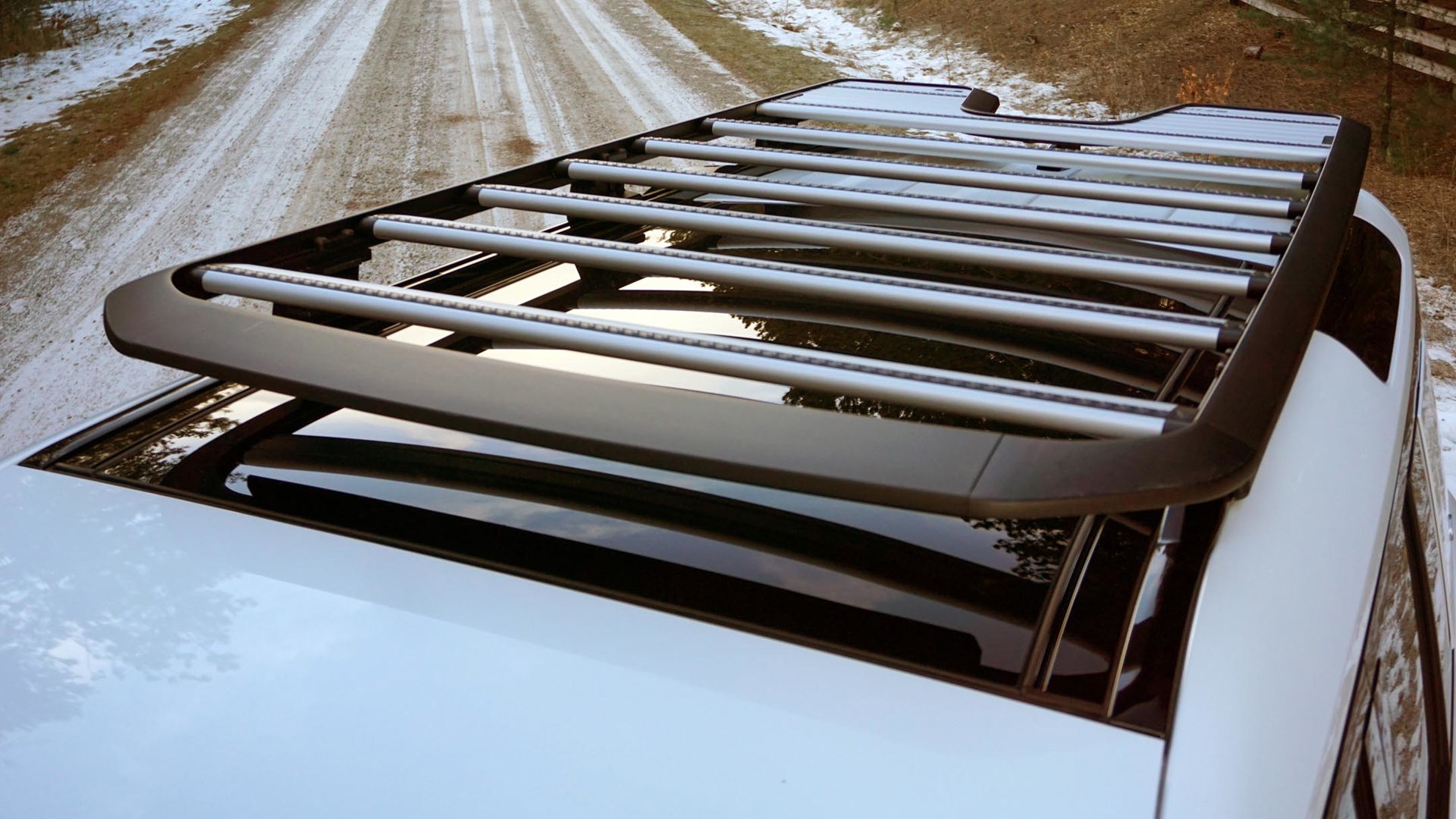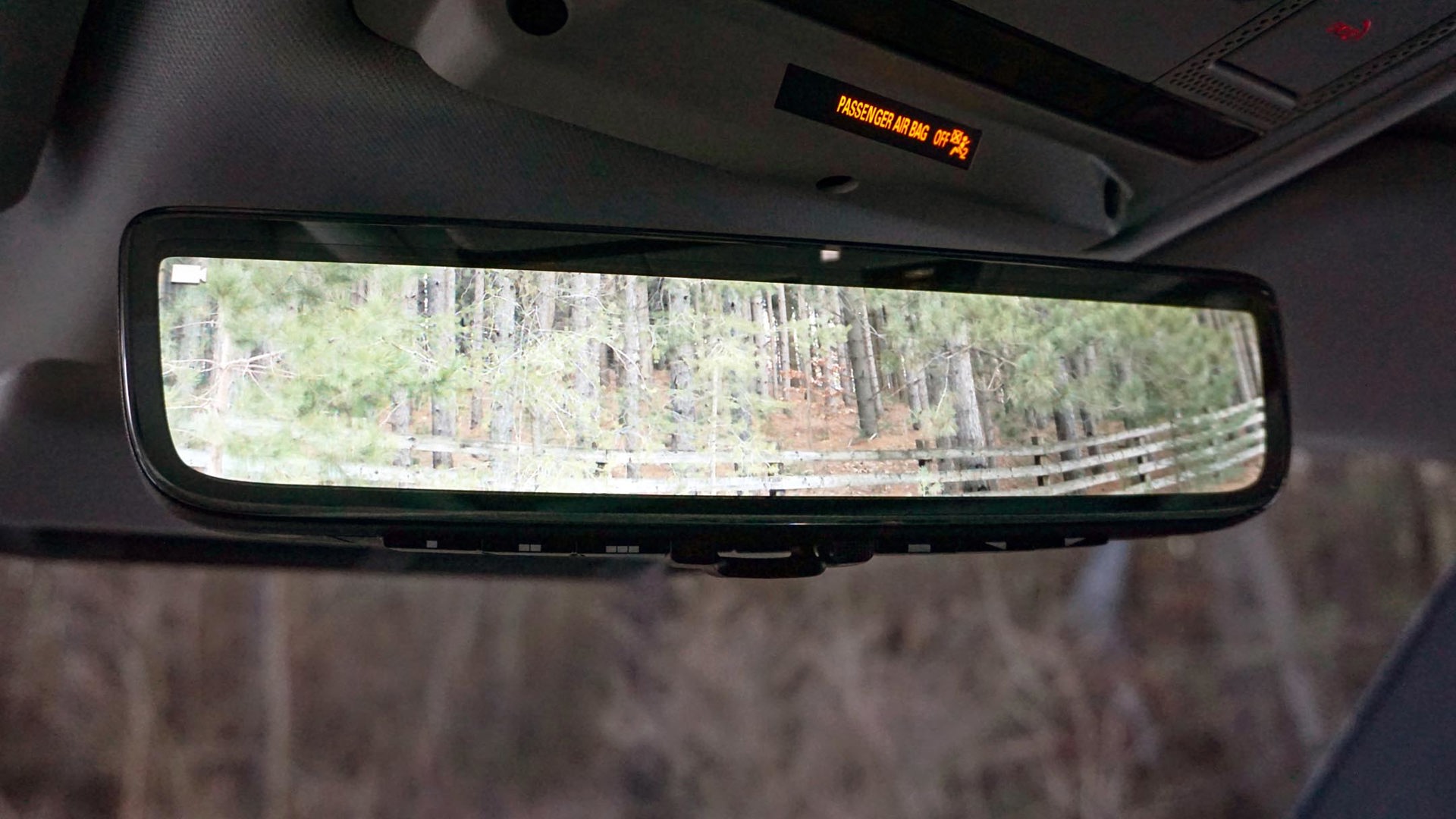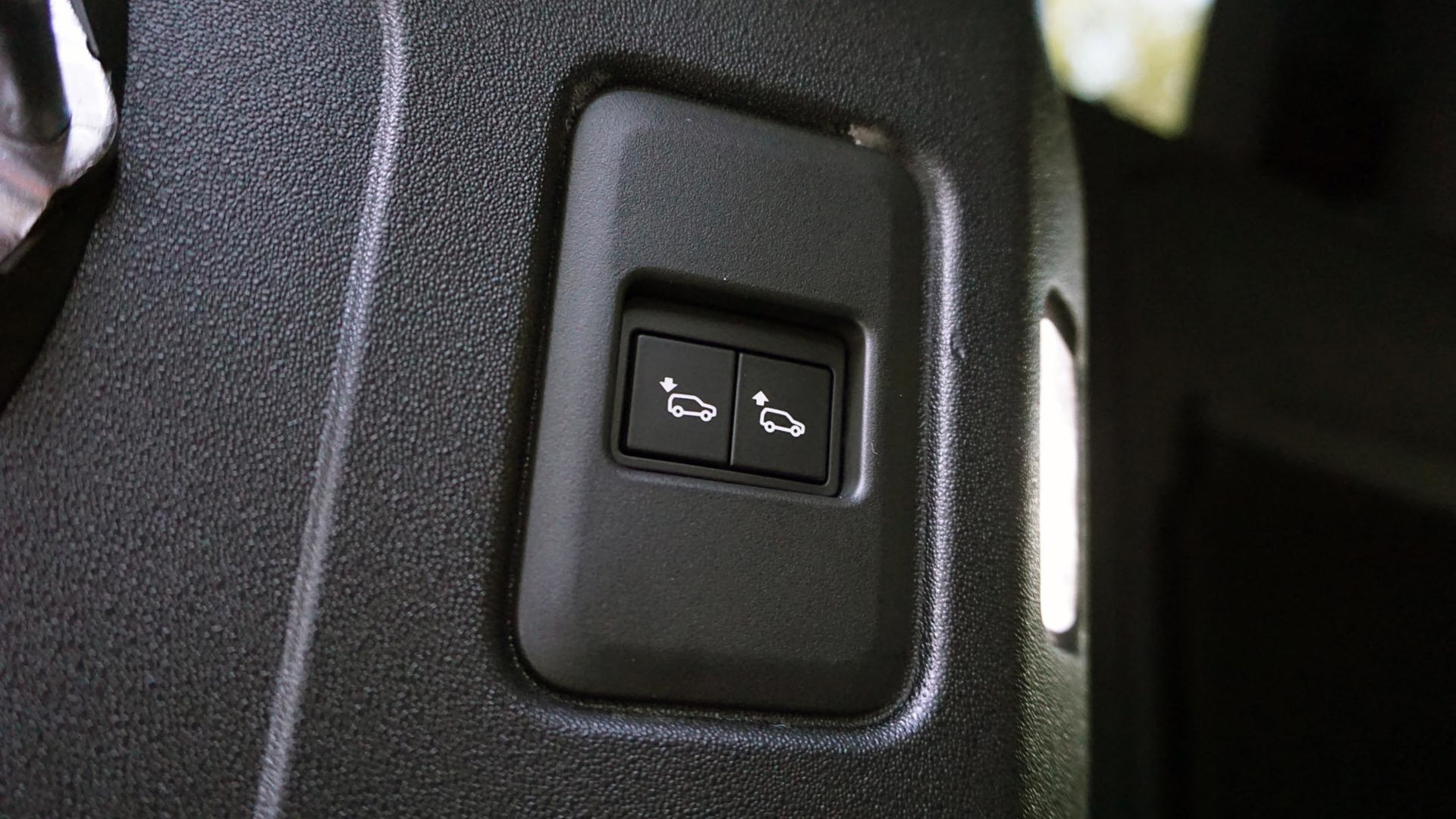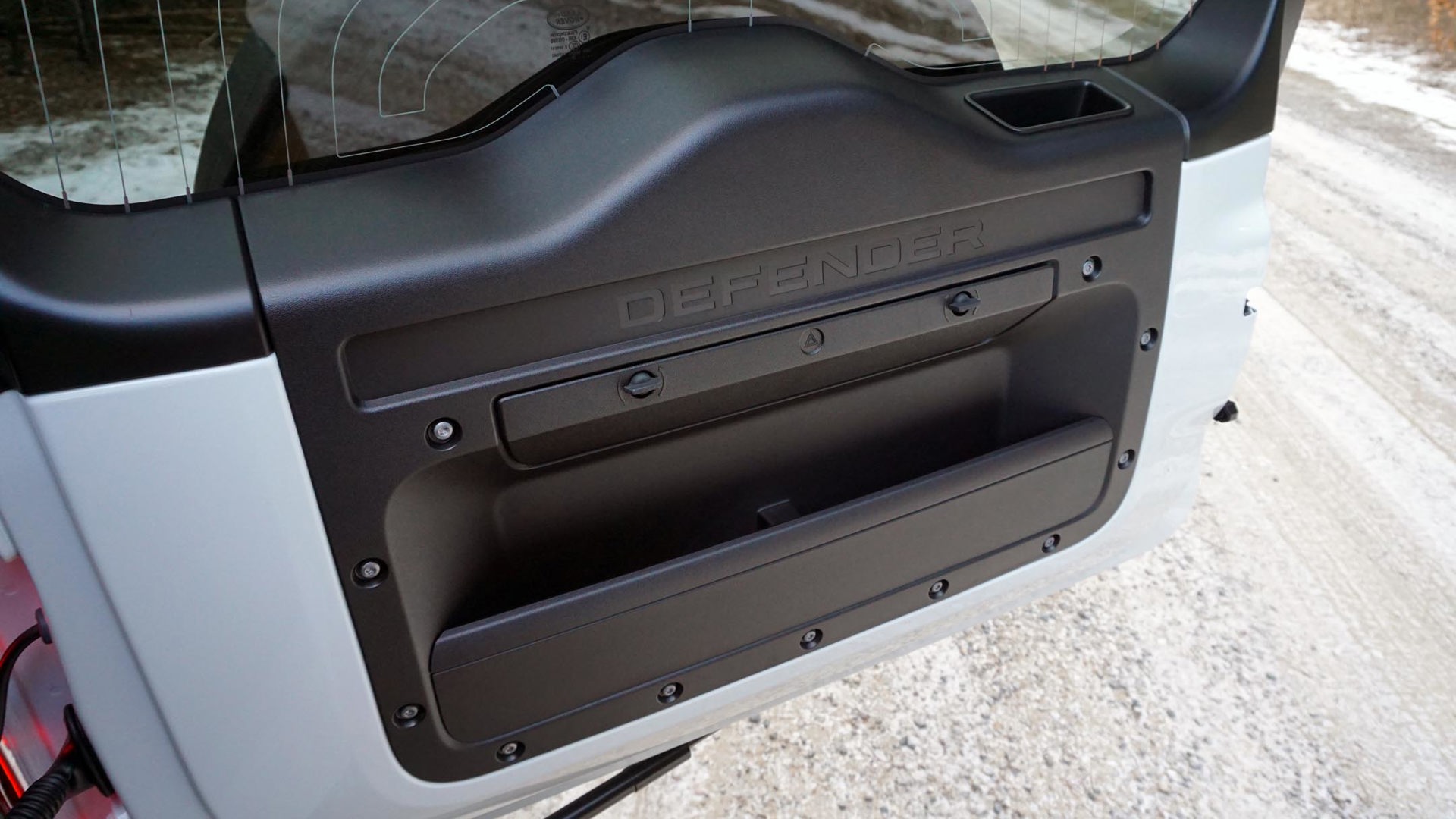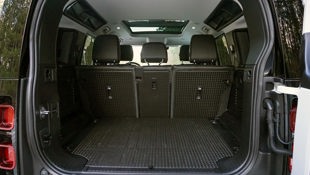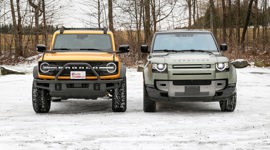 AutoTrader SCORE
AutoTrader SCORE
-
STYLING10/10
-
Safety9/10
-
PRACTICALITY9/10
-
USER-FRIENDLINESS9/10
-
FEATURES9/10
-
POWER9/10
-
COMFORT6/10
-
DRIVING FEEL7/10
-
FUEL ECONOMY5/10
-
VALUE7/10
Of all the new vehicles to hit the market in the last five years or so, few have had me as hyped as the 2021 Land Rover Defender.
It may not be exciting in the same ways as the Toyota Supra, but it’s long been a legend in its own right for the kind of go-anywhere ability it’s offered. It’s also seldom been sold here, save for a few years in the 1990s, making it a piece of forbidden fruit I’ve long craved a taste.
Should you feel anywhere close to the same way, the redone Defender definitely won’t disappoint for the presence it brings, plus all the ways it backs that up as a purpose-built off-roader. Should it land on the shopping list for your next family hauler, however, there are a few considerations to keep in mind.
Practicality: 9/10
Much like its predecessor that went out of production a few years ago after a run spanning nearly seven decades, everything about the new Defender is designed with adventure in mind. Sure, the Land Rover badge is about as posh as they get this side of the Bentley wings, but those two simple words still form the basis for how its products are built.
Perhaps the best lens to look at this adventure-ready rig through, then, is the same one you’d use for the Jeep Wrangler, only on a bigger budget. No, the Defender’s roof and doors don’t come off; but just like the Wrangler – and the forthcoming Ford Bronco, for that matter – it’s available in the choice of two- and four-door models, both of which are engineered for the trail before anything else.
Opt for the four-door like the one I tested and you get standard air suspension at all four corners, giving this boxy sport utility greater ground clearance at the touch of a button. It boasts 291 mm (11.5 in) of obstacle-hurdling height in its highest position – roughly 17 mm more than the Jeep Wrangler Rubicon. What’s more, its approach angle nearly matches that of the most hardcore Wrangler of the bunch, and its departure angle is better.
The Defender’s exterior dimensions are close to that of another member of the Jeep lineup: the Grand Cherokee. While it does stand taller overall – and thus offers more headroom – most interior measures are quite similar. That means plenty of space for occupants front and rear, including outstanding second-row legroom.
This four-door model, dubbed the Defender 110 just like the days of old, can be fitted with a third row of seats that fold into the floor, though my tester made do without. With all that room reserved for cargo, there’s 786 L behind the back seats – plenty for a family’s worth of stuff. If that’s not enough, towing capacity stands at 3,720 kg (8,200 lb), while Land Rover offers an intense roof rack that can carry as much as 100 kg (220 lb) worth of stuff up top.
Comfort: 6/10
That roof rack is just one of the many accessories the brand offers to make the Defender look like it drove right out of the Sahara and onto the street. The version I tested was fitted with just about all of them, too, thanks to the so-called Explorer pack that adds substantially to the cost – and the coolness.
The roof rack, a cargo box strapped to the side, chunky fender flares, and massive mud flaps can be bought as individual options or as part of that pricey package. There’s even a snorkel that comes strapped to the A-pillar, which helps the engine breathe better should you find yourself smashing sand dunes somewhere. It’s exactly the way I would order mine if I were in the market.
Unfortunately, all those extras make the wind noise the Defender generates a serious problem. It’s not exactly in keeping with expectations of a premium product such as this, and is one of the compromises that comes with a vehicle designed for the Highlands despite being driven mostly on high street. It’s bound to be bad even without the accessories, the Defender’s very design unlikely to set any records in the wind tunnel.
That it’s shaped like a block of cheese also means this slab-sided sport utility is prone to being pushed around on windy days like a wimpy kid in gym class. No, it’s not as bad as the wandering Wrangler, but it’s more difficult than your average SUV to keep the Defender moving in a straight line.
Then there’s the ride quality which, despite the air suspension, isn’t quite what it should be. Granted, it’s mostly comfortable on rolling roads, and even some rougher stuff. But the way bumps and cracks in the pavement reverberate through the cabin might not be up to the standards one might set for a premium vehicle. The unsprung weight of the 20-inch wheels the Defender rides on are undoubtedly part of the problem, but it’s far from perfect nonetheless.
Fuel Economy: 5/10
The Defender is also disappointing at the pumps, sucking back gas at an exponential rate. The straight-six-powered version I tested struggled to stay below 15.0 L/100 km during our time together, this despite the vast majority of the nearly 700 km that were added to the odometer coming on the highway. While the additional drag of the exterior accessories had an impact, this aerodynamically challenged SUV isn’t exactly economical. The final tally came in at 14.9 L/100 km.
Natural Resources Canada (NRCan) had not published official fuel consumption ratings at the time of this writing, though the United States Environmental Protection Agency (EPA) has bestowed a combined estimate of 19 mpg upon the version tested. In superior metric parlance, that works out to approximately 12.4 L/100 km. And the base four-cylinder version is expected to do even worse, with a rating of 13.0 L/100 km (18 mpg) combined, according to the EPA.
Power: 9/10
Looking past those disappointing numbers, the powertrain of the P400 model is more than adequate when it comes to moving the Defender’s mass. The turbocharged 3.0L engine generates 395 hp and 406 lb-ft of torque, and comes paired with a mild-hybrid electrical system. While it can’t run on electrons alone, the system can chip in with an extra jolt of torque to smooth out acceleration.
Shifts from the eight-speed automatic transmission go barely noticed besides the sound of the revs rising and falling. The exhaust has a nice note, too, with a throaty snarl as the six-cylinder crests the 2,500-rpm mark. It only serves to enhance the impression that the Defender is a surprisingly peppy piece of machinery with the pedal mashed.
Driving Feel: 7/10
Of course, those looking to go fast in a straight line behind the wheel of an SUV have plenty of options that are probably more appealing. Sure, the Defender can spin the tires on loose surfaces when surging ahead under heavy acceleration. Heck, the back end is even happy to step sideways just a bit for some additional dramatic flair. But then that’s not what the Defender is designed for.
It truly is a trail rig first and foremost, though it’s agile and responsive on a winding road. While its height inevitably leads to a bit of body roll, the Defender is a nimble performer when pushed. If there was an area in need of improvement it would be the lifeless steering, which offers nothing even close to a sense of which direction the wheels are pointed, but it’s perfectly pleasant to drive on all manner of surfaces.
Features: 9/10
Now for the bad news: despite my own desires to the contrary, I didn’t venture off-road in the Defender during testing. The main reason is that most of my local trails – they are few and far between to begin with – are seasonal. Since I drove the Defender in late December, it was too late for the kind of exploration I had my heart set on.
No matter, though, because autoTRADER.ca Editor-in-Chief Jodi Lai was lucky enough to drive the Defender on a fairly complex trail not too long before my week behind the wheel and came away impressed.
"The Defender impressed me mainly because it tackled all the obstacles I drove it through with ease," Lai wrote. "I was mostly surprised by how nimble it felt on the trail and how easy it was to manoeuvre around tight spots. On one steep, muddy, and slippery incline, the Defender powered its way up with no drama, and its excellent hill descent control allowed me to focus on steering around obstacles instead of maintaining my speed going down a steep hill on the other side. Aided by the SUV’s cameras, off-road drive modes, and assistants, I felt very confident that the Defender could handle pretty much anything on this side of Moab."
It will come as no surprise that the Defender is equipped with the basics of a proper off-road machine. Four-wheel drive with low-range gearing is but one of the systems it employs to get through the rough stuff, with Land Rover’s Terrain Response system at the ready as well. Like a drive-mode selector on steroids, the system tailors everything from the traction control to the throttle response, steering feel, and differential locks to various conditions. Since the Defender I tested had an upgraded version of the system, it also featured four programmable slots for custom drive modes.
While the optional snorkel doesn’t allow the Defender to drive deeper into water, the automaker claims it can ford depths of 900 mm (35.4 in). To ensure the operator doesn’t exceed what’s possible, the standard wade sensing system uses sensors in the door mirrors to provide depth information in real-time.
Should your daily commute keep you on the road rather than off it, there’s a decent amount of standard content to satisfy. A dual-zone automatic climate control system, Apple CarPlay and Android Auto integration, and a wireless phone charger all make the list of what’s included in the base version. Sadly – and somewhat oddly – heated seats aren’t included despite the $76,000 starting price, though a heated steering wheel is. And, of course, the list of upgrades is a long one, with a variety of ways to make it ever more luxurious and livable.
Safety: 9/10
The steering wheel is where you’ll find buttons for the standard lane-keep assist, as well as the optional adaptive cruise control system that uses self explanatory buttons for distance adjustment (they’re replaced by basic buttons with the standard conventional cruise control). Other advanced safety gear comes standard, too, like blind-spot monitoring and automatic emergency braking, while all exterior lights are of the LED variety, and the headlights feature automatic high-beam control.
User Friendliness: 9/10
As far as comfort and livability is concerned, the Defender can be decked out to be just as luxurious as any of its German rivals, though the base version I tested clearly has its priorities set squarely on being useful and utilitarian. It didn’t necessarily scream its $76,000 starting price at first glance, though upon closer inspection proved special enough to warrant the money Land Rover wants for it. Leather and a tweed-like upholstery line the seats, while the dash and door panels feature something like neoprene to give it a unique look.
The cabin itself is also incredibly simple and approachable, with just about everything centralized to the middle of the dash. A 10-inch touchscreen infotainment system sits above the gear selector and a straightforward set of switchgear that’s used for the HVAC system and vehicle controls. That’s it. It’s incredibly clever the way it all works together, too, with one of the dials for cabin temperature doubling for drive mode selection duty at the push of a button.
Styling: 10/10
The simplicity of the space is one of the Defender’s best features, the cabin giving off a kind of coolness through its focus on stuff like storage and places to hold on. It’s not necessarily a rugged space like the Wrangler’s interior; fit and finish is better than that, and it looks and feels like a proper premium vehicle even if the materials don’t – at least not in a traditional sense. But it’s definitely in keeping with the vibes the Defender gives off from outside.
With or without the bolt-on accessories, it’s a badass rig to look at and exudes presence from every angle. While the fascia is a little too much like a concept vehicle’s for my taste, it’s forgivable for the way it blends with the rest of the moon rover motif.
Value: 7/10
With its starting price of $65,300 with the 2.0L motor under the hood or $75,900 with the inline six powering the wheels, the Defender 110 is slightly less expensive than the Land Rover Discovery to start but a bit more with the big engine. Either way, the Discovery is one of many slightly more civilized options available (and it could easily go most of the same places as the Defender).
Bearing in mind that what’s being paid for here is presence and capability more than anything else, the four-door Defender is worth every penny for where it can go and what it can do. But it’s also a bit like cosplaying with a cape and real lightsaber. Unless you plan to actually venture off the beaten path, you’re paying for a lot of stuff you’re never going to use. Then again, that’s not a criticism that’s often levelled against the Mercedes-Benz G-Class, another purpose-built luxury off-roader that starts at more than double the price. Sure, the big ’Benz has more cachet, but the concept is very much the same.
The Verdict
Ultimately, I don’t think the 2021 Land Rover Defender is for just anyone, and it’s probably not the best choice if you’re looking for a plain-old family hauler to shuttle the kids to school. It’s also terrible on gas, so if you’re thinking about using it to get around town consider this a warning.
But as far as standout style goes, there aren’t many SUVs out there that are this cool. It exudes a kind of retro-inspired awesomeness to go with a rugged swagger that’s just so damn charming. If you want the world to think you’re ready for adventure, this isn’t a bad way to do it.
| Engine Displacement | 3.0L |
|---|---|
| Engine Cylinders | Turbo I6 |
| Peak Horsepower | 395 hp @ 5,500–6500 rpm |
| Peak Torque | 406 lb-ft @ 2,000–5,000 rpm |
| Fuel Economy | (EPA) 13.8/10.7/12.4 L/100 km cty/hwy/cmb |
| Cargo Space | 786 / 1,875 L seats up/down |
| Model Tested | 2021 Land Rover Defender 110 SE P400 |
| Base Price | $75,900 |
| A/C Tax | $100 |
| Destination Fee | $1,700 |
| Price as Tested | $93,409 |
|
Optional Equipment
$15,709 – Explorer Pack, $5,999; Off-Road Pack, $1,920; Panoramic Sunroof, $1,850; Adaptive Cruise Control, $1,200; Advanced Off-Road Capability Pack, $850; 20-inch Satin Grey Five-Spoke Wheels, $850; Trailer Hitch, $700; Black Pack, $650; Comfort and Convenience Pack, $640; Cold Climate Pack, $550; Heated and Ventilated Front Seats, $300; White Interior Accents, $200
|
|




















